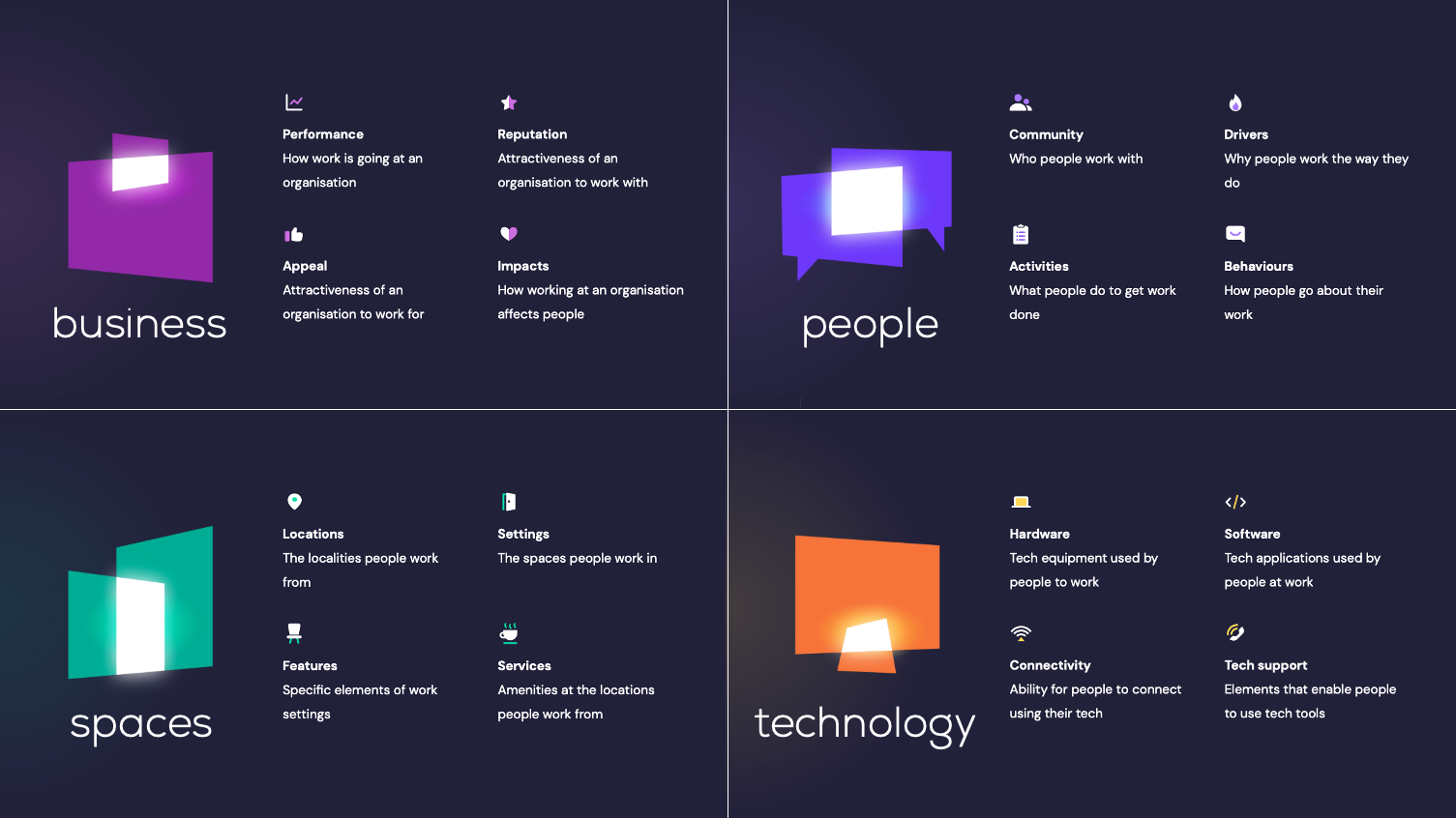
Workplace Mix
Articles
Not Just Data, But Direction: The Power of the Workplace Mix
October 16, 2025
A fresh look at the Workplace Mix — the framework at the heart of Audiem’s platform. This article explains how it turns open-text feedback into structured insight, why it matters more than ever, and how it sets us apart from generic AI tools.
When we introduce Audiem to new clients, one of the most common questions we’re asked is about the Workplace Mix - the themes and sub-themes that run throughout our dashboard. We’ve written about the Mix before (and even published an academic paper on its development - email us for a copy), but it’s worth revisiting why it matters.
In this article, I’ll explain how the Workplace Mix helps transform employee feedback into actionable insight - and how it gives you a clearer view of what’s really happening across your organisation.
A quick recap
The Workplace Mix is made up of four core themes: Business, People, Spaces, and Technology.
Each of these themes contains four sub-themes. For example, under Technology you’ll find Hardware, Software, Connectivity, and Tech Support.
Taken together, these four themes give you full coverage of the working world - not just bricks and mortar, not just people or IT, but the entire workplace landscape. Whatever someone might say about their experience of work, it belongs somewhere in the Mix.

Structure for your unstructured data
Audiem uses the Workplace Mix to tag every sentence of free-text feedback we process.
For example, if someone writes: “I’m struggling to do my work because my laptop’s running slow” - that sentence would be tagged under Performance (a Business sub-theme) and Hardware (a Technology sub-theme).
Audiem does this accurately and at speed - tagging tens of thousands of sentences in minutes, far faster (and more consistently) than any manual process. I can say that with confidence, having spent many hours in the past doing this by hand.
This tagging gives structure to your unstructured data. It allows you to quickly navigate and make sense of what can otherwise be an overwhelming amount of text - helping you focus on the issues that matter most.
Seeing how issues connect
Because each sentence can be tagged under multiple themes, the Workplace Mix also reveals relationships between issues.
In the example above, the employee’s hardware issue is linked directly to their ability to perform. These kinds of connections help you spot what’s causing problems in your workplace - and give you a head start in fixing them.
By contrast, traditional rating-scale feedback might show you correlations between issues, but it can’t show you the causes - at least not without additional research. With Audiem, employees are already telling you the causes in their own words. You just need the tools to listen properly.
Built for all kinds of work
While much of the feedback we analyse comes from office-based employees, the Workplace Mix works just as well in other settings - from retail, manufacturing and logistics to healthcare, education and field-based roles. The framework applies wherever people work.
And because the Workplace Mix covers the full landscape of work, you don’t need to ask dozens of questions to uncover meaningful feedback. A small number of well-crafted open questions is usually enough. Employees will tell you what matters to them - Audiem does the rest.
The Workplace Mix is one of the things that sets us apart from generic AI tools. It’s underpinned by machine learning models that our in-house workplace experts have trained on tens of thousands of examples of real-world employee feedback, giving Audiem a rich understanding of how people describe their experiences at work. That’s what enables us to turn employee feedback into actionable insight - not just data, but direction.
Curious what the Workplace Mix might reveal in your organisation?
Drop us a line at hello@audiem.io - we’d love to chat.
Sign up to our newsletter
The latest episodes & blogs directly to your inbox
Thank you for your submission!
Oops! Something went wrong while submitting the form.







